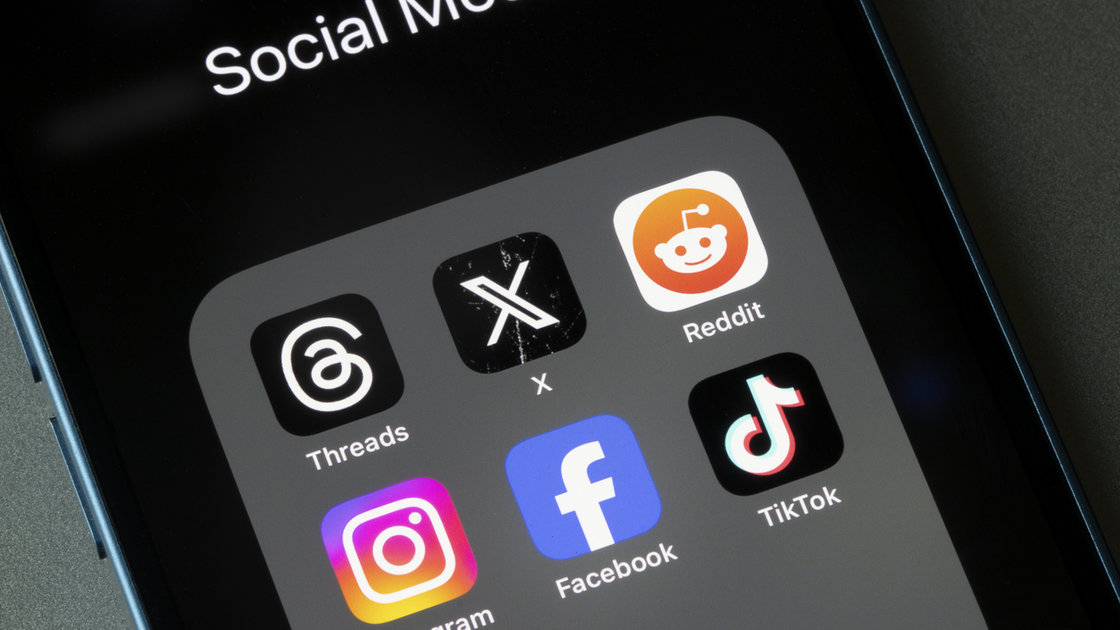Japan’s Top Social Media Platforms in 2024

E-commerce in Japan has experienced a steady upward trend since the outbreak of the infectious disease in 2020. Additionally, as more individuals return to their usual activities, brick-and-mortar businesses are witnessing a notable recovery.
In tandem with these consumer shifts, the quantity of social media users in Japan continues to expand annually. While search engines like Google remain widely utilized, social networking stands out as the most prevalent platform. In this article, we delve deeper into the evolving landscape of social media in Japan in 2024. We trust this analysis will aid in refining your company’s brand strategy in the Japanese market.
About Japan market
Noteworthy in the Japanese market was a 15.0% year-on-year increase in Internet advertising placements to 2.48 trillion yen. The growth of digital promotion contributed to the market expansion, as demand for video advertising, particularly in-stream advertising, increased. Also noteworthy was the growth of branded content businesses such as web media and magazines. In this context, how is social media being used in Japan?
Japan is facing a rapidly aging population. The median age of the Japanese population is 49.0 years old and is projected to rise. However, it is estimated that 82.9% of the Japanese population uses the Internet.
In general, the Japanese spent approximately 3 hours and 45 minutes (15.4% of the previous year) on the Internet, about the same as the previous year.
When it comes to social media usage, Japan tends to allocate less time compared to the global average. For instance, the average daily time spent on social media is merely 51 minutes, significantly lower than the global average of 2 hours and 31 minutes.
However, the percentage of social media users among the population aged 18 and above stands at 82.7%, surpassing the global average of 77.8%. This can largely be attributed to the widespread adoption of LINE, a messaging application that has supplanted email.
LINE has permeated various age groups as a primary means of communication, boasting 92 million active users, which accounts for 74.4% of the population. In essence, a significant portion of the Japanese populace engaged in consumer activities utilizes social media, particularly LINE.
The most-used Social Media Platforms
※The graph above shows the number of monthly active users of various social media platforms in Japan, as well as usage rates by age group among the Japanese population.
LINE stands out with a staggering 92 million daily users, firmly establishing itself as an integral part of daily communication among Japanese individuals. Following closely behind, platforms like X, Instagram, and Facebook maintain a consistent flow of users. Similar to trends in other nations, TikTok is also experiencing a surge in popularity within Japan.
Now, let’s explore the evolving dynamics of each of these social media platforms and anticipate shifts in consumer behavior. We’ll delve into specific strategies for leveraging social media marketing in Japan, platform by platform.
YouTube in Japan
※YouTube is popular in Japan, with over 70 million users.(2023)
In Japan, it has become a popular SNS for a wide range of ages, from teens to 50s, and is characterized by a high percentage of males (over 60% for all ages).
In addition to PCs, users can easily watch videos on smartphones, tablets, game consoles, etc. External devices that allow users to watch YouTube on their TVs and TVs equipped with YouTube viewing functions are also available.
It is a service that is very familiar to people, and one of its characteristics is that it has a very active user base, with 500 hours worth of video uploaded every minute as of February 2020.
Another reason for YouTube’s popularity is that many influencers, known as “YouTubers,” are actively disseminating their content.
In addition, “influencer marketing,” in which companies use popular YouTube stars to promote their products and services, is attracting attention for its ability to approach a wide range of situations, from expanding consumer awareness to sales promotion.
In addition, the short movie function “YouTube Shorts” has quadrupled the number of views compared to last year, making it a particularly noteworthy feature among the many functions offered by YouTube.
Instagram in Japan
※The number of monthly users of Instagram in Japan has surpassed 33 million.(2023)
Although most Instagram users are in their 20s, the percentage of female users is around 60% for all ages, and the percentage of male users is around 40%, making it a popular social networking service among both men and women.
The number of Instagram users in Japan is as follows
June 2014: 4 million
June 2015: 8.1 million
March 2016: 12 million
December 2016: 16 million
October 2017: 20 million
November 2018: 29 million
June 2019: 33 million
When the app was first released, it was a social networking service specializing in photos, but video posting became possible, and short movie functions such as “Stories” and “Reels” were also added.
In particular, “Reels,” in which videos are displayed to people other than one’s followers, have attracted significant attention as a feature for attracting new followers, as they can be viewed millions to tens of millions of times.
Furthermore, the “live-streaming” function, which allows users to live-stream and throw in money, is also provided, and the ability to share videos and images in a variety of situations is a major strength.
Instagram is also indispensable for business; the number of Japanese companies utilizing Instagram has surpassed 10,000 as of 2016.
Instagram is showing its strength in business use as well, with the release of ad delivery functions such as the “shopping function” and “survey ad function,” which are strong for acquiring purchases and engagement.
With the acceleration of the online shift as a tailwind, Instagram will continue to be a social networking service that we cannot take our eyes off of in the future.
X in Japan
※X has 66 million users in Japan.(2024)
X is one of the most familiar social networking services for Japanese people.
Japan is the second largest market for X (formerly Twitter) after the United States, indicating the popularity of X (formerly Twitter) in Japan.
The number of monthly active X(Twitter) accounts in Japan is over 45 million.
X(Twitter) has the largest number of users in their 20s, and while the overall ratio of female users is high, it is also characterized by a large percentage of male users in their 50s.
The male ratio was higher at one time but reversed in 2024.
New features such as “Space” for real-time audio streaming and “X Premium” paid subscription are actively being released.
X (formerly Twitter) is also actively linked to TV and events and has established a position among the many social networking services by taking advantage of its real-time nature.
TikTok in Japan
※TikTok has 27 million users in Japan.(2024)
Teenage women and men in their 20s are the most active users of TikTok in Japan. However, the age range is expanding widely, with more than 10% of users in their 40s through 60s. Thus, the average age of TikTok users in Japan is about 34, close to the middle age group.
Japanese TikTok users are active on TikTok and seek a wide range of content on TikTok, from “fun” to “useful information. TikTok is also used by many Japanese companies in their marketing activities.
Therefore, it is assumed that the “commercialization” of the platform will increase. The key to winning on TikTok in Japan remains to have fun and entertain without being intrusive with a marketing and brand-heavy approach.
Facebook in Japan
※Facebook has 26 million users in Japan.(2023)
Facebook is the third largest SNS in Japan, spread across more than 20% of the population. It is also the SNS with the highest age group of users. Over the past few years, it is clear that Facebook in Japan has been gradually losing its presence, losing popularity to visual platforms such as TikTok. Nonetheless, the platform boasts 26 million users, and thanks to its high age user base, it is a great platform to target professionals, families, and users with high disposable incomes, as well as B2B marketing strategies.
Facebook in Japan is dominated by e-commerce, retail, and service provider profiles, most of which offer low-priced services, products, and services where purchase decisions are made in a short period. This is a trend not seen before. Many brands are using Facebook either to gather positive comments and word of mouth from customers or to use paid advertising. Another trend we are seeing is B2B brands promoting their content and using email marketing to generate leads, traffic, and engagement.
LINE in Japan
※LINE has more than 95 million users in Japan.(2023)
LINE is now in the realm of infrastructure in Japan, with many users ranging from the young to the elderly. In Japan, where the population is aging, LINE is also characterized by having more users in older age groups than other social networking services. is evident.
While the majority of the platform’s activity is focused on user interaction rather than the sharing and consumption of social content, the volume and level of engagement can play a significant role in connecting businesses and users through direct messaging and advertising. In terms of reaching a broad and diverse user base and increasing brand awareness in the Japanese market, nothing beats LINE, regardless of the target audience.
Things to consider when operating a SNS in Japan
What are the essential insights for brands aiming to harness social networking in Japan? Japanese social networking platforms can serve as powerful allies, facilitating the swift dissemination of reviews, ratings, and word-of-mouth feedback about your products and services. However, they also hold the potential to offer unexpected advantages.
Given the typical purchasing behavior in Japan, many users initiate their buying journey by seeking “social proof” regarding the brand’s reputation, quality, user experience, and pricing. Cultivating positive reviews across all channels fosters robust trust and can significantly enhance conversion rates. Relying solely on reviews and ratings on your website may not suffice, as consumers may perceive them as biased or selective.
Hence, it’s imperative to craft a seamless user experience that not only encourages product purchases but also incentivizes users to share feedback on social networking platforms.
Japanese consumers anticipate online products and services to be priced lower than their physical counterparts. Therefore, discounts, sales, and promotions should not be viewed as exceptions but rather as the baseline expectation.
Without proper implementation of competitive pricing and cross-platform social validation, online marketing endeavors in Japan may inadvertently benefit competitors. Japanese consumers habitually compare prices and reviews across different social networking platforms before making a purchase decision. If a rival brand boasts superior reviews and pricing, your digital marketing strategy might inadvertently drive customers toward their products.
In essence, fostering trust among Japanese consumers necessitates a strategic approach to managing social networking platforms.
hotice Provides Matching Support
At hotice, we can help you select the right models for your marketing without you having to contact the influencers individually.
Selection of Japanese models, specifically the influencers for marketing purposes, can be very challenging.
hotice can help you facilitate the selection of influencers while also helping you communicate efficiently with these influencers.
Some models and influencers can be troublesome even after joining an agency, causing issues.
However, with hotice, you will have no problem of such.
If you are looking to optimize Japanese model marketing, hotice is the company for you.







